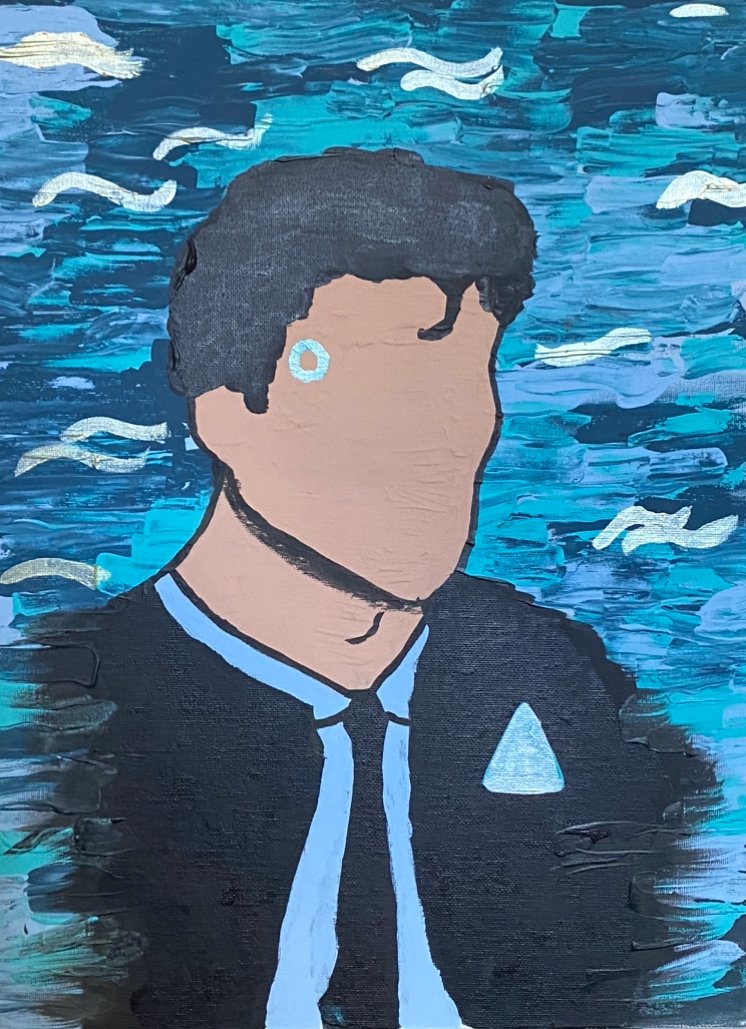What I learned about my art from hyper-fixations
Childhood Joy
As a child with undiagnosed autism, I was very quick to latch onto special interests, the first of which came at age 7. Star Trek, with its colourful jumpsuits and bizarre aliens, was my first creative love.
Bored in school on a cold morning, I created my first fan work: a drawing of Kirk and Spock standing next to each other smiling, badges upside down and feet pointing flatly outwards. It was messy and imperfect, yet I was so proud. As well as watching the show, I made something out of it that represented me. At 7, I wasn’t thinking about this, of course, just how cool Spock’s ears were.
My dad was very proud of it, and for a while it lived tacked up to our kitchen wall.
Then followed drawings of Daleks, the Simpsons, and hundreds of drawings of Finn from Adventure Time, because he was the only one I felt I could draw well. There was also a drawing that I was so proud of, a raunchy picture of John Watson and Sherlock Holmes kissing that my dad found. I had never been so embarrassed.
During this time of childhood obsession, I found where my passions lie. The types of characters I liked, the ways I liked to draw them, and what made me happy.
Teenage learning and burnout
When I got to the point in my life where art was becoming more than a hobby to me, hyper-fixations fuelled my artistic endeavours. One of the days that really shaped my love of art was summer in 2019. I was sitting in a park with a close friend of mine, an animation student at the time. She was an incredible artist, and I had always looked up to her work. On this day, she was sketching references from Pinterest.
We had met over a mutual love of K-pop, and she was extremely talented at drawing one of my favourite idols: Bangchan from Stray Kids. She had a way of drawing his features so accurately that it was awe-inspiring. Again and again, she would fill sketchbook pages with what was unmistakably his face, smiling, frowning, cartoonish, realistic, but always his face. Next to her, I was doodling him as well, but none of my art looked like him. It was disproportionate, flat, and didn’t strike a chord with me at all.
Looking at my page, I saw that although my interests had developed and deepened, my art had remained the same; it was an outlet for my obsessions. For me, fan art was a gateway. My friend began to teach me techniques for building facial structures. YouTube tutorials taught perspective and colouring, and day after day, I taught myself how to draw.
Over this period, I became a good artist. I did a lot of work that I was proud of, especially during lockdown. But it was a slog to make. It was exhausting trying to keep up with my art-school peers, and I found that after a while, I was drawing from obligation instead of passion. It got to the point where I would draw silhouettes of people and not their faces, because I didn’t want to look at proportions ever again.
I was stuck in a loop of boring pencil drawings and faceless shells. So, I set down my pencils and focussed on my film work instead.
Reclaiming art in my adulthood
Luckily for me, there’s only so long an art university student can go without being inspired.
I was watching some interviews with Peter Capaldi - Doctor Who had been a hyper-fixation almost as long as Star Trek - and it was a huge source of comfort for me, especially in a difficult time like uni hand-in season.
Peter Capaldi, as well as being an incredible actor, is a great cartoonist. It was in one of these interviews that I saw his self-portraits. It was sketchy, harshly-lined, and dramatic, but it was unmistakably him.
He was grinning as he drew it, and so proud to show it off, like a kid with fridge art. It looked like he’d had so much fun, and was speaking so passionately about his work.
I treated my art as a burden and stopped altogether instead of going back to what made me like art in the first place.
I wanted that feeling back again.
This is what propelled me back into experimenting with cartooning, and later slowly moving back into more technical drawings; this time at my own pace.
I would frequently draw people in Peter Capaldi’s style. I painted the tower of Isengaard into Van Gogh’s Starry Night. I continued to draw Kirk and Spock, this time with their badges the right way up. It became an outlet again that I could engage in when I wanted to, and if I wasn’t happy with something, I could learn to improve it without the pressure of making ‘good’ art. That little compulsion to draw Spock’s ears in school would keep driving me back towards art time and time again.
I learned to enjoy art again, not for the photorealistic drawings of Bangchan (though they help), but for the love of adding my own input to something I loved. I could have fun making cartoons, drawing characters in whatever style I liked, and adding my own artistic twists. I prefer fun art over clean art any day of the week.
Let me know which of these awful Spock drawings was your favourite, and if you have any fandom art, I’d love to see it! Tag me on social media at:
Instagram: instagram.com/acajaemia
YouTube: youtube.com/@acajaemia
Facebook: facebook.com/acajaemia
Tumblr: acajaemia.blog
If you want to purchase any of my art, commission me, or support me, visit the store on my website or: ko-fi.com/acajaemia
Have a great day!











